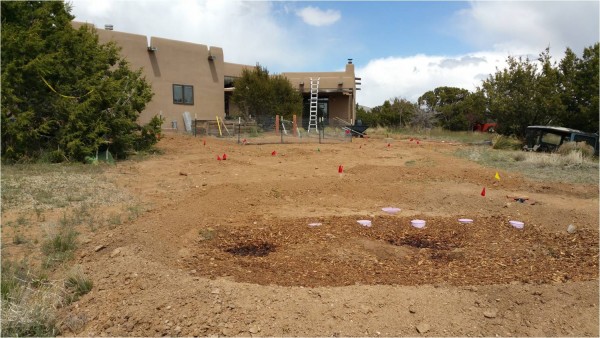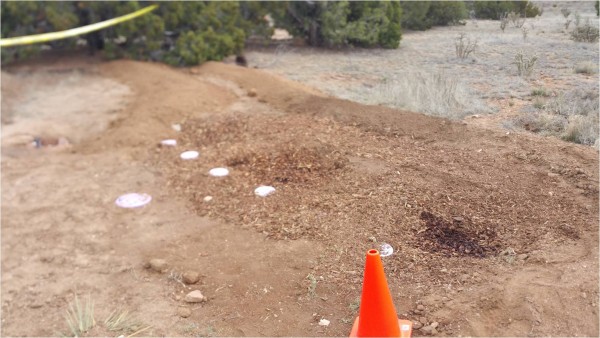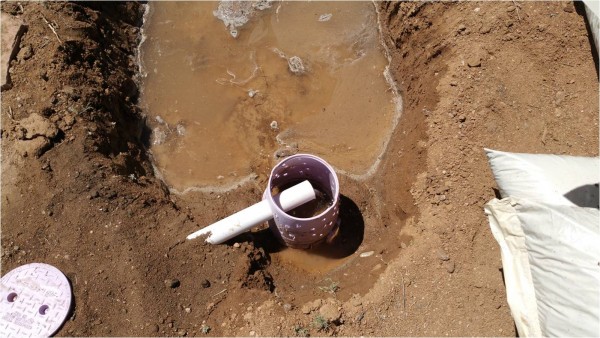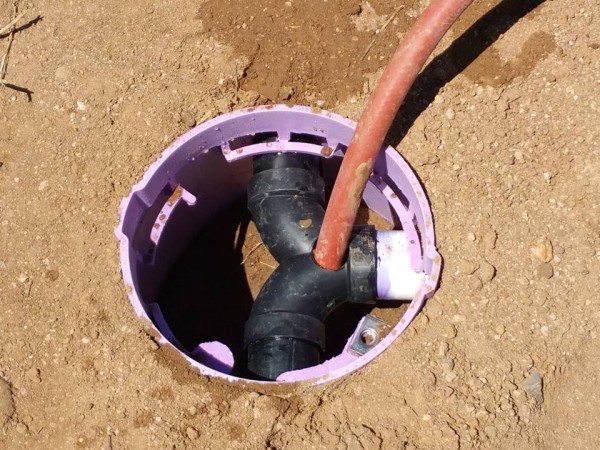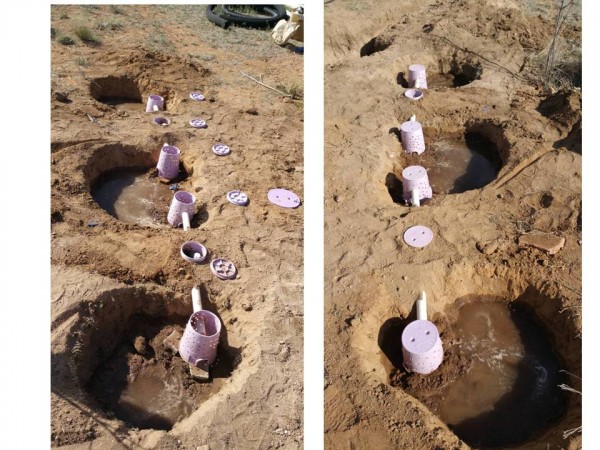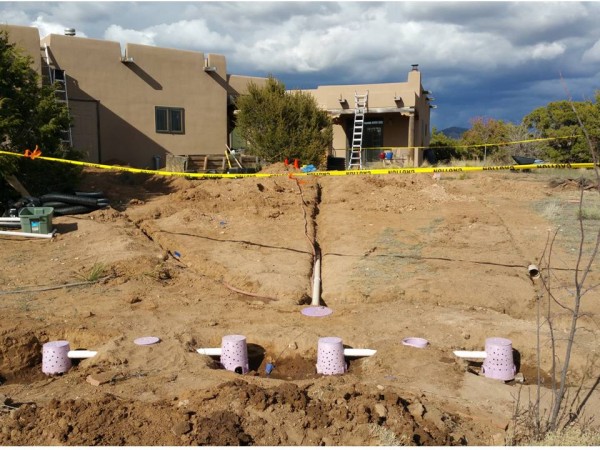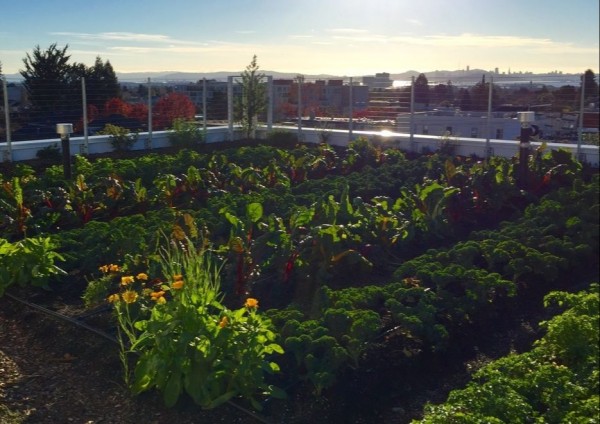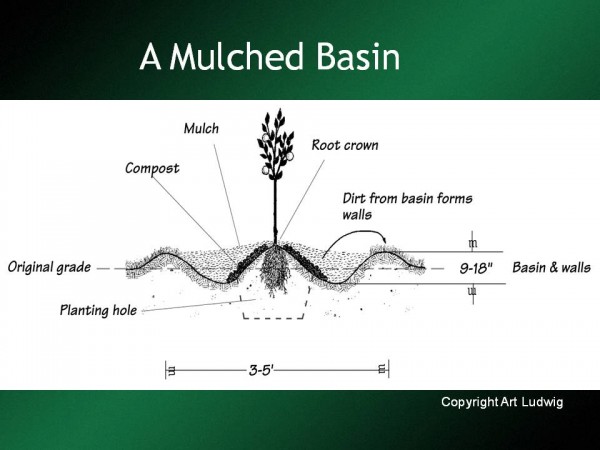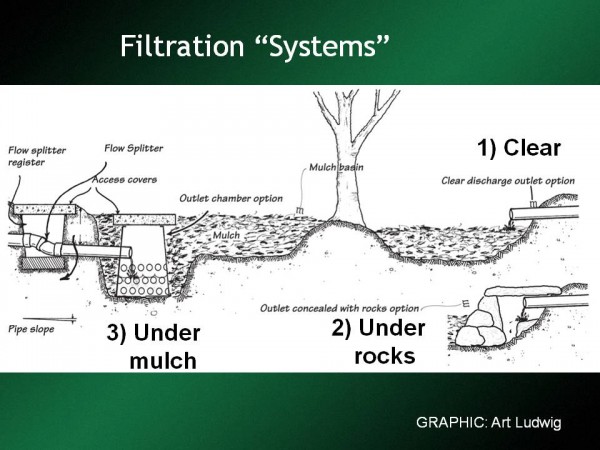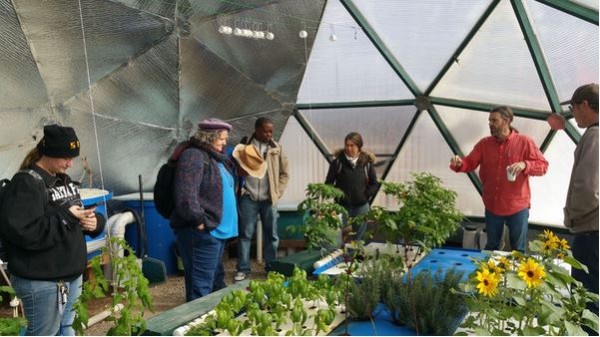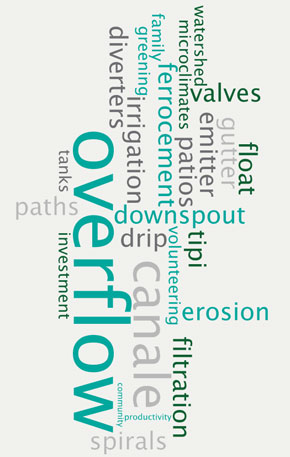The PermaDesign Weblog, with Nate Downey and Melissa McDonald!
SLIDE 38: Deflecting Stormwater
You never want significant runoff to enter a mulched basin. That’s why your keen eye might be able to see a berm above the line of outlet chambers. This deflects stormwater to some nearby on-contour swales, but it prevents the greywater from escaping the mulched basin in a large rain event.
03/27/2017 | (0) Comments
SLIDE 37: Mix and Mulch
After compost is mixed into the caliche, shredded bark is used to cover the amended soil, and the mulched basin is almost complete.
03/25/2017 | (0) Comments
SLIDE 36: Raised Outlet
Here Here’s a top view of the outlet chamber. Note how high the outlet pipe is. If any small animals squeeze into the chamber, they will still have difficulty getting up into the pipe. At the right, you will see the all-important ingredient to any mulched basin—compost. This allows the greywater to be broken down and the native “soil” (aka caliche) to accept all that wonderful, live-producing moisture.
03/23/2017 | (0) Comments
SLIDE 35: Flow Splitter Access
Each flow splitter has an inspection/clean-out port that can be removed for (you got it!) inspection and cleaning. Debris can get stuck at this juncture, so it is very important to have access to this part of the system. Here, we were using the port to quickly test the system. In particular, we wanted to ensure that the two other flow splitters were sending 50% of the water they receive in each intended direction.
03/21/2017 | (0) Comments
SLIDE 34: Outlet Chambers
Here are two photos of the four outlet chambers and two chambers that protect the branched drains (flow splitters). On the left, all lids are off, so we can see that approximately the same amount of water is flowing out of each outlet. On the right, all of the lids have been put on except for one of the lids that will be placed on top of one of the flow splitters.
03/19/2017 | (0) Comments
SLIDE 33: A Mulched Basin
Here’s a photo of the greywater system when it’s almost complete. Note the small holes drilled in the sides of the chambers. These prevent varmints from entering your bathroom, while they allow your greywater to grow your plants. In this case, we will be growing a windbreak against the prevailing SW winds in the community of Eldorado in Santa Fe County—where the winds are ferocious, especially in spring. In this case, the windbreak will protect the veggie garden, the fruit tree guilds, an herb spiral, an horno, and a couple of dining and seating areas.
03/17/2017 | (0) Comments
Top Leaf Farms
Top Leaf Farms is a very interesting California company that specializes in residential and commercial living roofs. They can design, build, and even manage rooftop systems that serve local communities. The systems can range in size from 250 – 50,000 square feet. Top Leaf Farms also offers internships and training in Urban Agriculture Production.
03/15/2017 | (0) Comments
SLIDE 32: A Mulched Basin
Here is another nice drawing provided by Art Ludwig (www.oasisdesign.net). It shows how much is going on under the surface in a mulched basin. Don’t forget to keep the top of your plant material’s nebka (root crown) high, so that your stems and trunks don’t rot after someone takes a super long shower.
03/15/2017 | (0) Comments
SLIDE 31: Filtration “Systems”
Here’s a graphic by greywater guru, Art Ludwig, which shows a side view of the previous slide. The outlet chamber shown here under mulch can be made of an upside down 5-gal plant bucket or a sturdier material such as the lavender-colored valve boxes shown in the previous slide. Either way, small holes are drilled in the side(s) of the circular “boxes” such that greywater can escape into the mulch (where it is filtered and broken down by naturally existing bacteria). Finally, the wet resource seeps into the root zones of neighboring plant material. The holes should be small enough so that no animals can get into the chamber. The outlet of the pipe should be high enough to prevent mice and other small rodents from getting into the pipe (in the unlikely event they squeeze through a hole or burrow under the bucket. For more info about greywater, please see my book “Harvest the Rain,” our greywater page (http://permadesign.com/portfolios/greywater_recycling), or Art Ludwig’s books and website, http://www.oasisdesign.net
.03/13/2017 | (0) Comments
The Future is Bright—and Fishy
From my latest Permaculture in Practice column:
Property owners have a special responsibility now that much of the United States government has been pirated by a self-serving school of science-deniers. Yes, our public lands face peril, and every conscious soul must demand protection for the resources upon which we depend. But those blessed with the privilege of owning private land must do more.
03/06/2017 | (0) Comments
